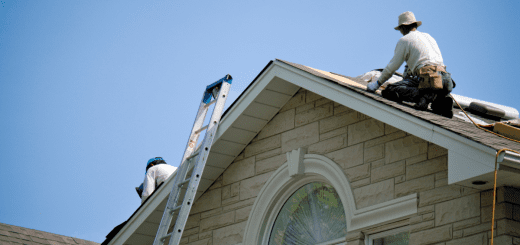Storm Safety Tips for Senior Citizens

Bad weather can be scary, especially if it hits your home before you can prepare. This risk is exacerbated if you or a household member is a senior citizen, where mobility challenges and other natural consequences of aging make preparationPreparation is the steps taken to ready a property, equipmen... More more essential.
Although it’s not uplifting to consider what may go wrong, planning is one way you can outsmart the weather and save your peace of mind. Follow these four steps to prepare yourself and your senior family members for storms and other disaster events.
1. Keep in Touch
Good communication is essential for storm preparation and safety. If you spend much of your time inside and don’t hear about upcoming storms from news sources, you may be surprised and unprepared when a storm hits.
Many people keep tabs on upcoming weather by checking apps on their phones or listening to the news. You can also sign up for text messages and emails that will alert you of local emergency events. Alternatively, invest in an old school weather radio to avoid any technological confusion or outages.
It’s important to communicate frequently with family members or close friends. Sometimes they can give you additional information, and it’s always a good idea to give them an opportunity to know that you’re safe and well. If there is no family members or close friends nearby, consider contacting a senior home care provider in advance to have a professional caregiver at home until the storm is over.
During some severe storms, you may lose the ability to charge electronic devices such as your phone. Plan ahead by charging several external battery packs so you can keep in touch with your family. If you’re helping a senior citizen with contingency plans, then keep these batteries in an accessible location for their use.
2. Prep Your Home
During a bad storm, your home is a safe oasis that protects you from the weather and sustains you until the storm passes. Before poor weather hits, take some time to prepare your home so it’s ready to serve you and senior citizens in your household well.
Severe weather conditions can interfere with the systems that usually keep your home running. For instance, utilities such as Wi-Fi, heat, and electricity may all malfunction or stop working during a bad storm. If your heat cuts out in the summer, you might overheat. In the winter, you could experience hypothermia. Unfortunately, this can be a heightened risk for any family members with more critical health needs or sensitivity to temperature changes.
Consider what you might need to weather a storm without heat, light, or electricity in each season. Then, you can stock you and your loved ones’ homes with essential supplies like blankets, water, food, working flashlights, and any medications or health supplies you need.
Home elements that run on electricity could also be negatively affected. For instance, if your electricity is cut off, some of your food may spoil. Additionally, some senior citizens rely on electric-powered mobility aids like stair lifts or elevators to navigate multi-story spaces. To cover any service gaps, it’s a good idea to back home devices up with generators or battery packs.
3. Build an Emergency Kit
Have you ever noticed how stores sell out of bread and water right before a big storm? That’s because many people don’t prepare until after a storm is already on its way. While it’s better to prepare late than never, it’s best to prepare early.
To prepare a senior citizen’s home for poor weather, think about their basic needs. If your electricity went out, how would they function? What would you wish they had? It’s a good idea to cover basic needs for at least two weeks. If you live in a rural location or an area that’s prone to extreme weather, you may want to stockpile even more supplies.
Start an emergency kit by storing 1 gallon of water per person for each day. You should also include food, weather-appropriate clothing, blankets, charged batteries, a battery-powered radio, flashlights, batteries, medicine, glasses, hygiene items, paper and pencils, and important documents.
Store these items together in a secure location in the home. Make sure to keep the food fresh and the electronics fully charged — assisting your loved one if needed. Once you’ve covered your basic needs, put some thought into storm activities. Consider adding games, puzzles, and books to the stash so everyone has something to keep their minds off the weather until the storm passes.
4. Make a Contingency Plan
Creating a plan before a severe storm occurs will give you and your family peace of mind during the event. You should have several different plans in place to suit different kinds of emergencies.
For instance, your plan for handling a winter storm will look different from your plan for dealing with heavy rain and potential floodingFlooding is the overflow or accumulation of water in areas t... More. Each plan should be unique to your home, location, and personal needs.
To create a plan, start by considering possible emergency scenarios for your area. Is it likely to snow heavily? Are violent rainstorms common? Does your area suffer from earthquakes or tornadoes?
Once you understand the risks common to your area, you can create a plan of action for each emergency situation. Talk over your plan with family and friends to see if you’ve missed anything important. Ask them about the best way to stay in contact during a storm and whether they have a plan for severe weather.
Storm Safety for Senior Citizens
Planning for storms may cause anxiety as you consider all the ways that storms can impact you and your home. Senior citizens in particular may rely on medications, mobility aids, and reliable heating in order to stay healthy and able in a time of emergency.
It’s true that the weather is uncertain, much bigger than you are, and uncontrollable. However, the work you’ve done to plan ahead means you don’t need to worry about severe weather events. You’re already ready for whatever weather comes your way.
Evelyn Long is the editor-in-chief of Renovated, a home improvement site with tips for homeowners and contractors.












